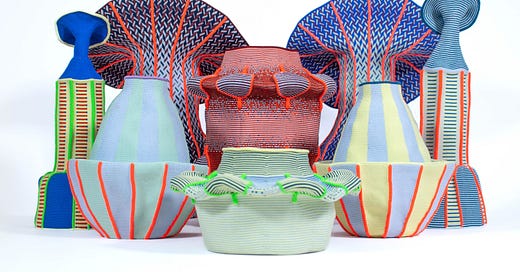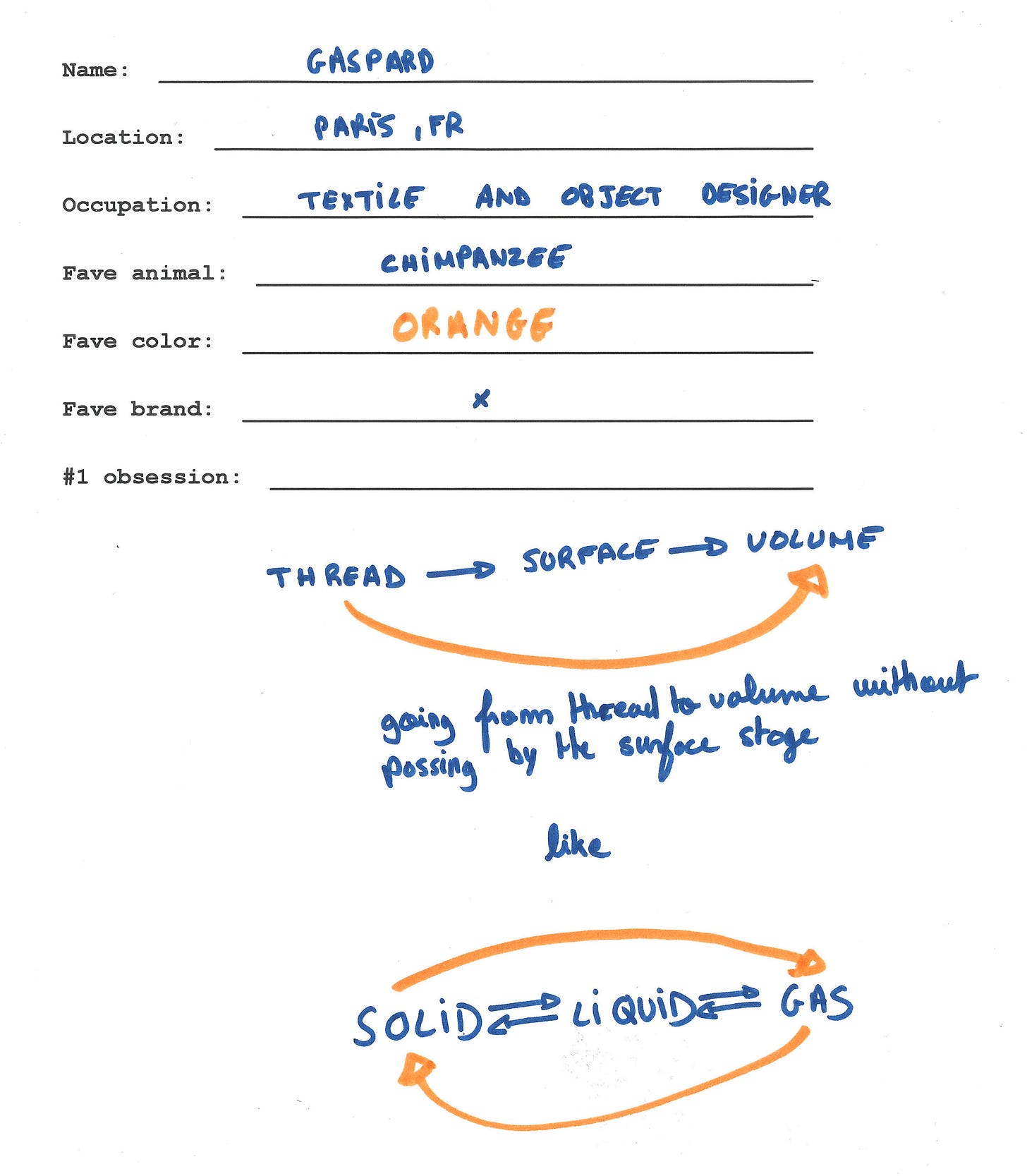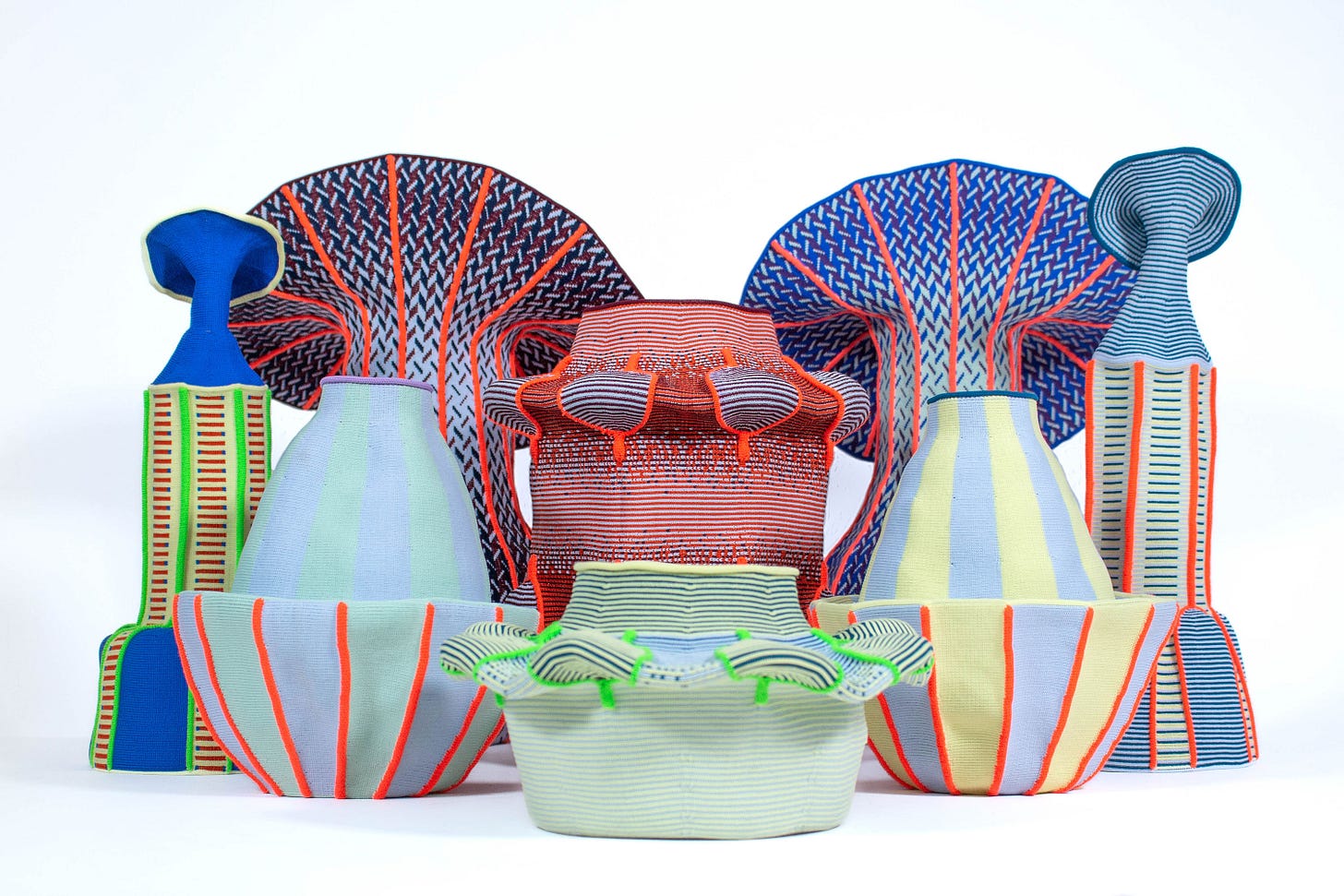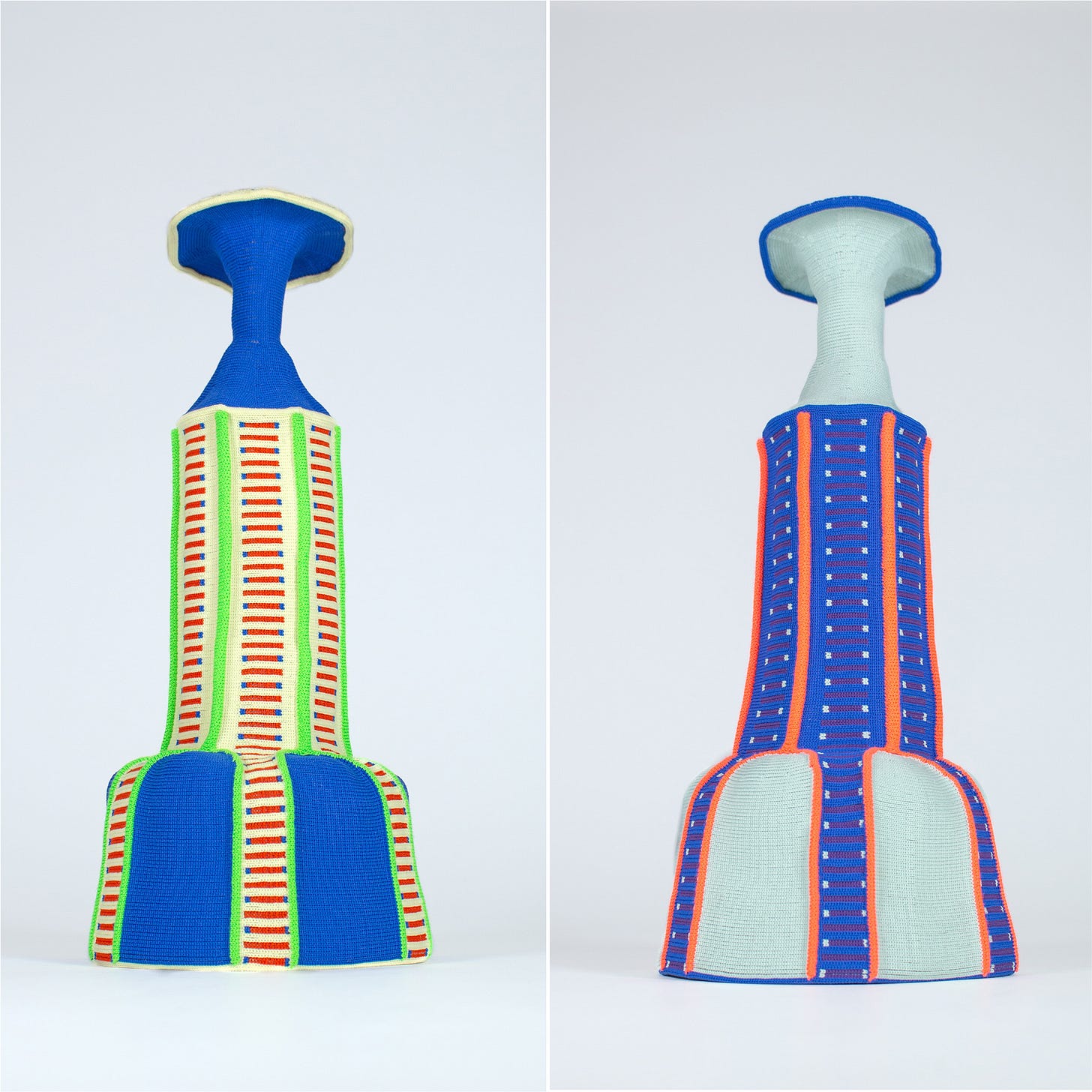Gaspard Fleury-Dugy’s architectural approach to knitting
Inspired by grids, patterns, and the fundamentals of architecture, Gaspard Fleury-Dugy reimagines knitting as a modern design tool.
This is my last piece for 2024. Have a wonderful holiday and a happy new year!
Meet Gaspard Fleury-Dugy, a French textile and knitting designer who’s redefining the boundaries of craft, technology, and art—basically all the things I love to geek out about. Gaspard studied at Duperré in Paris and the Swedish School of Textiles, where he developed a knack for turning industrial knitting machines, and even virtual reality, into tools for creating wildly innovative "soft objects."
When I first discovered his work, I couldn’t wait to hear more about how he creates his vibrant patterns, architectural structures, and 3D designs worlds, and what inspires his process.
With a vision rooted in the structural logic of grids and weaving, Gaspard transforms textiles into objects that occupy space like buildings, proving that knitting is as much about engineering as it is about art.
Where did you grow up, and what pulled you into the world of textiles?
Gaspard Fleury-Dugy: I grew up in the west of France, in the countryside. When I was in school, I realized I wanted to work with my hands. I went to an art school that covered a bit of everything—architecture, objects, and more. I can’t pinpoint a single moment that brought me to textiles, but I think I chose it because I wasn’t interested in the other fields.
For example, the way they taught object design felt boring—everything was focused on functionality, like chairs or cups. In textiles, I felt more freedom to explore and create. Later, I visited Duperré in Paris and saw how the textile program encouraged experimentation. That’s when I knew I wanted to pursue it.
Was there a moment where you just knew, “This is it—textiles are my thing”?
Yes. At Duperré, I was introduced to industrial knitting machines, and it changed everything. My teachers encouraged me to try working with an old knitting machine, and I was immediately hooked. I started buying my own machines—now I have four, and I’ve spent hours repairing and learning how to use them.
For me, textiles are like architecture. They’re not just flat; they’re a structure—a crossing of threads. Even something small, like a piece of fabric, is like a building made from intertwined materials. That perspective made me fall in love with textiles even more.
I love that—textiles as architecture. Can you unpack that idea a little more?
Sure. When I imagine textiles, I see them as three-dimensional. The structure of weaving—a grid, for instance—reminds me of architectural frameworks. Gottfried Semper, a German theorist, wrote that weaving is the foundation of architecture. He described gestures like intertwining threads or bamboo as the origins of construction. To me, textiles and architecture share the same language of structure and pattern.
That’s such a cool way to think about it. So, how did you move from creating flat textiles to making 3D objects?
At Duperré, I discovered that knitting machines could create volume by distributing more material in one area and less in another. I started experimenting and realized I could make objects, not just fabrics.
Later, when I studied at the Swedish School of Textiles, I began using virtual reality (VR) to design. I would draw 3D forms in VR, unfold them, and translate the designs for the knitting machine. It’s like solving a puzzle—figuring out how to make the machine recreate a 3D idea.
It sounds like you’re balancing art and functionality. How do you approach that?
I try to be right on the edge between the two. For example, I make textile vases, but they can’t hold water—they’re more about form. Some people see them as sculptures, and others adapt them to make them functional, like adding a glass container inside. I enjoy playing with those boundaries and challenging expectations.
It’s less about planning and more about feeling.
Your use of color is so striking. How do you decide on your palettes?
It’s mostly intuitive. I pick spools of thread that I like and put them together. Then I test them on the machine to see how they look knitted. If something works, I analyze why—usually, it’s about balancing contrast. I try to pair two saturated tones with one less saturated tone for balance. It’s less about planning and more about feeling.
So, you’re all about the machines! Do you ever work by hand?
Not really. I have a small loom that I use for sampling, but I don’t knit or weave by hand. It’s too slow, and I’m drawn to the technical and mechanical side of working with machines. Plus, I find it satisfying to repair and program them myself.
What sparks your patterns? Are they inspired by nature, or is it something else entirely?
People often think my inspiration comes from nature or African art, but it doesn’t. My patterns are rooted in the mechanics of textiles. For example, I look at technical drafts, like satin bindings or woven grids, and reinterpret them as patterns. I love taking these hidden, technical elements and pushing them into the spotlight.
What’s next for you?
I currently work as a textile designer for Élitis, where I focus on woven fabrics. On the side, I’m developing my “soft objects”—3D knitted pieces—and exploring ways to bring them to galleries. I’m also interested in furniture design and would love to create entire textile-based interiors.
That sounds amazing. Like, full-on textile immersion?
Exactly. I want to design spaces where everything—furniture, walls, even the smallest details—is made of textiles. It would feel like stepping into a cocoon, warm and enveloping. Textiles are so versatile and approachable, and I love how they can transform a space.
Thank you for sharing your story, Gaspard. I’m so inspired by the way you combine craft, technology, and creativity.
Thank you, Jaime. It’s been a pleasure!
↪ Follow Gaspard on Instagram @gaspard.fleury.dugy












